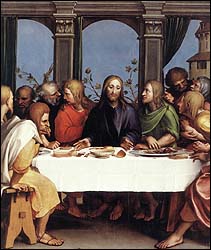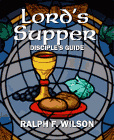Free E-Mail
Bible Studies
Beginning the Journey (for new Christians). en Español
Old Testament
Abraham
Jacob
Moses
Joshua
Gideon
David, Life of
Elijah
Psalms
Solomon
Songs of Ascent (Ps 120-135)
Isaiah
Advent/Messianic Scriptures
Daniel
Rebuild & Renew: Post-Exilic Books
Gospels
Christmas Incarnation
(Mt, Lk)
Sermon on the Mount
(Mt 5-7)
Mark
Luke's
Gospel
John's Gospel
7 Last Words of Christ
Parables
Jesus and the Kingdom
Resurrection
Acts
The Early Church
(Acts 1-12)
Apostle Paul
(Acts 12-28)
Paul's Epistles
Christ Powered Life (Rom 5-8)
1 Corinthians
2 Corinthians
Galatians
Ephesians
Vision for Church
(Eph)
Philippians
Colossians,
Philemon
1
& 2 Thessalonians
1 & 2 Timothy,
Titus
General Epistles
Hebrews
James
1 Peter
2 Peter, Jude
1, 2, and 3 John
Revelation
Revelation
Conquering Lamb of Revelation
Topical
Glorious Kingdom, The
Grace
Great Prayers
Holy Spirit, Disciple's Guide
Humility
Lamb of God
Listening for God's Voice
Lord's Supper
Names of God
Names of Jesus
Christian Art
About Us
Speaking
Contact Us
Dr. Wilson's Books
Donations
Watercolors
Sitemap
Excursus: A Brief History of the Doctrine of the Real Presence and Transubstantiation
https://www.jesuswalk.com/lords-supper/history-real-presence.htm
Audio (8:56)
https://www.jesuswalk.com/mp3files/lords-supper/history-real-presence.mp3
 Hans Holbein the Younger (1497-1543), The Last Supper (1524-25), Limewood, 115,5 x 97,3 cm, Kunstmuseum, Öffentliche Kunstsammlung, Basle. Larger image. |
This is a Bible study, not a doctrinal treatise. However, since the position of the Early Church Fathers is used by some to support the doctrine of the Real Presence, I've outlined its historical development.
The doctrine of the Real Presence, that is, that Christ is present corporeally (i.e. bodily) in the sacrament of the Lord's Supper, has a long history in the Western Church, culminating in the Roman Catholic teaching of transubstantiation and Luther's view of sacramental union.1 However, the Real Presence wasn't taught in the earliest times.
Paul's language "the body and blood of the Lord" in reference to eating the Lord's Supper unworthily (1 Corinthians 11:27), of course, was very early, though most Protestants would contend that he was speaking figuratively, not literally.
The Early Church Fathers
A survey of the early Church Fathers indicates that the earliest documents and Fathers such as the Didache (late first century)2 and Justin Martyr (died c. 165)3 don't assert the doctrine of the Real Presence of Christ in the sacrament. Ignatius (died about 107) comes closer when he protested of his Gnostic opponents that "they do not admit that the Eucharist is the flesh of our Savior Jesus Christ, the flesh which suffered for our sins and which the Father, in His graciousness, raised from the dead."4 However, by the time of Irenaeus (died c. 200 AD), you find statements that the bread and wine are strictly Christ's body and blood, in an argument against the Docetists about the reality of Christ's earthly body.5 Tertullian (died c. 220 AD) and Cyprian (died 258 AD) sometimes used terms that indicate a symbolic understanding of the body and blood. Kelly concludes, however, that "while accepting the equation of the elements with the body and blood, [Tertullian] remains conscious of the sacramental distinction between them."6
Symbolic Vocabulary
Though the trend was to see the communion elements as the actual body and blood of Christ, there is another strain as well that used symbolic vocabulary to refer to the elements of the Lord's Supper. Serapion (died 211 AD) refers to the elements as "a likeness."7 Eusebius of Caesarea (died c. 339 AD) on the one hand declares, "We are continually fed with the Savior's body, we continually participate in the lamb's blood," but on the other states that Christians daily commemorate Jesus' sacrifice "with the symbols of his body and saving blood," and that he instructed his disciples to make "the image of his own body," and to employ bread as its symbol.8 The Apostolical Constitutions (compiled c. 380 AD) use words such as "antitypes" and "symbols" to describe the elements, though they speak of communion as the body of Christ and the blood of Christ.9
Other Fathers who mix Real Presence vocabulary with symbolic terms include Cyril of Jerusalem (died 444),10 Gregory of Nazianzus (died 389),11 and Macarius of Egypt (died c. 390 AD).12 Athanasius clearly distinguishes the visible bread and wine from the spiritual nourishment they convey.13 The symbolic language did not point to absent realities, but were accepted as signs of realities which were present but apprehended by faith.14
While St. Augustine (died 430) can be quoted to support various views of the Lord's Supper, he apparently accepted the widespread realism theory of his time,15 though in some passages he clearly describes the Lord's Supper as a spiritual eating and drinking.16
An Open Controversy
However, the uses of symbolic language cited above are exceptions. More and more the more popular, vividly materialistic theory was adopted that regarded the elements as being converted into the Lord's body and blood. Though the Latin church had been moving toward the view of the Real Presence for some time, the first person who clearly taught the doctrine of transubstantiation (though not using that term) was Paschasius Radbertus (785-865), abbot of the monastery at Corbey, France, in a book On the Body and Blood of the Lord (831). His chief opponent among several was Ratramnus, another monk at Corbey, who wrote a tract asserting a sacramental rather than literal sense in which the elements were the body and blood of Christ.17 Radbertus was later canonized as a saint and Ratramnus' book banned by the Roman Church.
In reaction to Radbertus' assertion of the corporeal presence of Christ in the Eucharist, Berengar (d. 1088) defended Ratramnus openly, but when threatened with trial and excommunication recanted. By the mid-eleventh century, transubstantiation was a dogma of the Latin church and was officially accepted in the Fourth Lateran Council (1215).18
The Reformers on the Real Presence
Several centuries later Martin Luther challenged the doctrine of transubstantiation and contended for a belief that the Real Presence was present "under, through, and with" the communion elements. He called this "sacramental union," though some have termed it "consubstantiation." Luther affirms the Real Presence in his Smaller Catechism:
"Q. 287. What does Christ give us in this sacrament?
In this sacrament Christ gives us His own true body and blood for the forgiveness of sins.
Q. 288. How does the Bible make it clear that these words of Christ are not picture language?
Christ's words in the Sacrament must be taken at face value especially because: A. these words are the words of a testament, and even an ordinary person's last will and testament may not be changed once that person has died; B. God's Word clearly teaches that in the Sacrament the bread and wine are a communion or participation in the body and blood of Christ; C. God's Word clearly teaches that those who misuse the Sacrament sin not against bread and wine but against Christ's body and blood."19
 Available as e-book and paperback. |
Luther's view of the Real Presence was opposed by Swiss theologian Zwingli at the Colloquy of Marburg. Most Protestants other than Lutherans, however, have followed the view of John Calvin who affirmed a spiritual presence of Christ with those who partake of communion. A typical Calvinistic formulation of the spiritual presence is found the Westminster Shorter Catechism (1647).
"The Lord's supper is a sacrament, wherein, by giving and receiving bread and wine, according to Christ's appointment, his death is showed forth; and the worthy receivers are, not after a corporal and carnal manner, but by faith, made partakers of his body and blood, with all his benefits, to their spiritual nourishment, and growth in grace."20
References
- Note: I am tracing here only beliefs in the Real Presence and transubstantiation, not other Catholic understandings of the Lord Supper, such as the Eucharist being an offering or sacrifice or the adoration of the consecrated elements.
- Didache 9:1-5; 10:3; 14:1-3.
- Justin Martyr, Dialogue with Trypho 41:3.
- Ignatius, Letter to the Smyrnaeans, 6.
- Irenaeus, Romans 7:3; Smyrn 6f. Cited by J. N. D. Kelly, Early Christian Doctrines (Harper & Row, 1958, 1960), pp. 196-198. The Apostolate for the Eucharistic Life website contains some of the eucharistic texts of the early fathers, but is not complete (www.eucharisticlife.com/ELimages/Timeline/Timeline.html).
- Kelly, pp. 211-216.
- Kelly, p. 441, cites Serapion, Euchol. 13, 12-14.
- Cited by Kelly, p. 441, De solemn. pasch. 7.
- Apostolical Constitutions 5, 14, 7; 6, 23, 5; 7, 25, 4.
- Cited by Kelly, p. 441, Cyril of Jerusalem, Cat. 22, 9; 23, 20; 22, 3.
- Cited by Kelly, p. 441, Gregory of Nazianzus, Or. 45, 19; 8, 18.
- Cited by Kelly, p. 441, Marcarius of Egypt, Hom. 27, 17.
- Athanasius, Ad. Serap. 4, 19.
- Examples such as these of symbolic language in the early Church Fathers are given less importance by J. Pohle, "The Real Presence of Christ in the Eucharist," Catholic Encyclopedia (1908 edition).
- Kelly, pp. 446-448.
- Cited by Kelly, pp. 446-448, Augustine, Enarr. in ps. 3, 1; 98, 9; Serm. 131, 1; tract. in ev. Ioh. 27, 5; 25, 12; 26, 1.
- Philip Schaff, History of the Christian Church, vol. 4, §126-127.
- Ibid., vol. 4, §128-130.
- Luther's Smaller Catechism , questions 287-288.
- Westminster Shorter Catechism , Question 96: What is the Lord's Supper? Developed out of the English Reformation by English and Scottish divines in the 1647.
Copyright © 2025, Ralph F. Wilson. <pastor![]() joyfulheart.com> All rights reserved. A single copy of this article is free. Do not put this on a website. See legal, copyright, and reprint information.
joyfulheart.com> All rights reserved. A single copy of this article is free. Do not put this on a website. See legal, copyright, and reprint information.
 |

|
In-depth Bible study books
You can purchase one of Dr. Wilson's complete Bible studies in PDF, Kindle, or paperback format -- currently 48 books in the JesusWalk Bible Study Series.
Old Testament
- Abraham, Faith of
- Jacob, Life of
- Moses the Reluctant Leader
- Joshua
- Gideon
- David, Life of
- Elijah
- Psalms
- Solomon
- Songs of Ascent (Psalms 120-134)
- Isaiah
- 28 Advent Scriptures (Messianic)
- Daniel
- Rebuild & Renew: Post-Exilic Books
Gospels
- Christmas Incarnation (Mt, Lk)
- Sermon on the Mount (Mt 5-7)
- Luke's Gospel
- John's Gospel
- Seven Last Words of Christ
- Parables
- Jesus and the Kingdom of God
- Resurrection and Easter Faith
Acts
Pauline Epistles
- Romans 5-8 (Christ-Powered Life)
- 1 Corinthians
- 2 Corinthians
- Galatians
- Ephesians
- Philippians
- Colossians, Philemon
- 1 & 2 Thessalonians
- 1 &2 Timothy, Titus
General Epistles
Revelation
Topical

 To be notified about future articles, stories, and Bible studies, why don't you subscribe to our free newsletter, The Joyful Heart, by placing your e-mail address in the box below. We respect your
To be notified about future articles, stories, and Bible studies, why don't you subscribe to our free newsletter, The Joyful Heart, by placing your e-mail address in the box below. We respect your